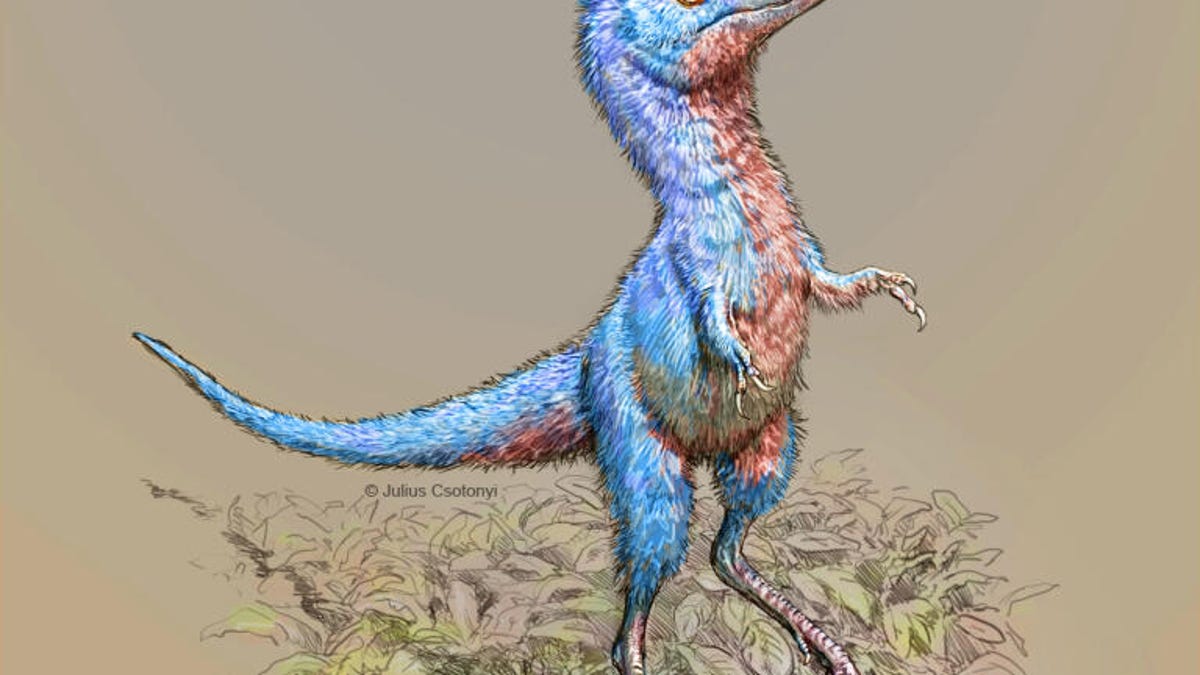Baby tyrannosaur dinosaurs were the size of dogs, embryo fossils show
Tyrannosaur embryo fossil fragments are helping scientists peek into the dinosaurs' early days.

This artist's impression shows what a juvenile tyrannosaur may have looked like.
Tyrannosaur dinosaurs roamed Earth long before baby photos were a thing, so all we have is the fossil record to figure out what they looked like in their earliest days. It's been a difficult quest, but the discovery of "the first-known fossils of tyrannosaur embryos" is helping to create a picture.
A research team led by University of Edinburgh paleontologist Greg Funston studied a tiny jaw bone and claw fragments that belonged to cousins of the famous Tyrannosaurus rex. The team created 3D scans to analyze the fossils and determined the dinosaurs would have been 3 feet (about 1 meter) long when they hatched.
The team published its findings in the Canadian Journal of Earth Sciences on Monday. "Tyrannosaurid eggs and embryos remain elusive, and juvenile specimens -- although known -- are rare," the paper said. Funston suggested it's possible tyrannosaurs laid soft-shelled eggs that would not be easily preserved as fossils.
While eggs still haven't been found, the fossil embryo fragments are telling. The team's work suggests the eggs were about 17 inches (43 centimeters) long and the youngsters would have been about the size of Border Collie dogs when they took their first steps.
This fossilized jawbone fragment comes from a baby tyrannosaur.
Tyrannosaurs have ruled the roost in dinosaur popularity thanks to their large size, tiny arms and predatory nature. They could reach 40 feet (12 meters) in length, which makes imagining them as dainty pooch-sized babies seem pretty wild.
"This may seem enormous, but remember that they would have been curled up inside an egg," Funston wrote in a blog post.
"These bones are the first window into the early lives of tyrannosaurs and they teach us about the size and appearance of baby tyrannosaurs," Funston said in a statement on Monday. "We now know they would have been the largest hatchlings to ever emerge from eggs, and they would have looked remarkably like their parents -- both good signs for finding more material in the future."

